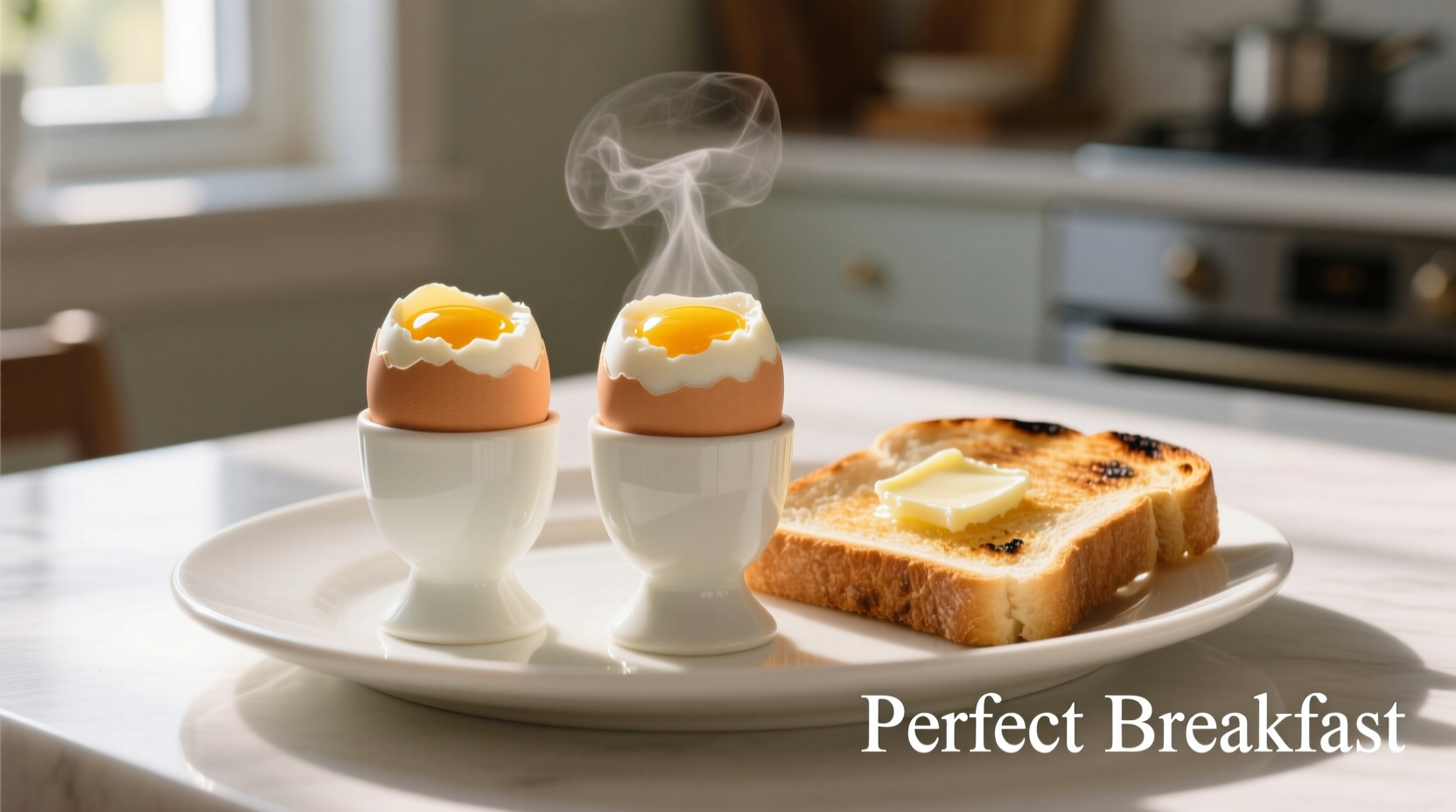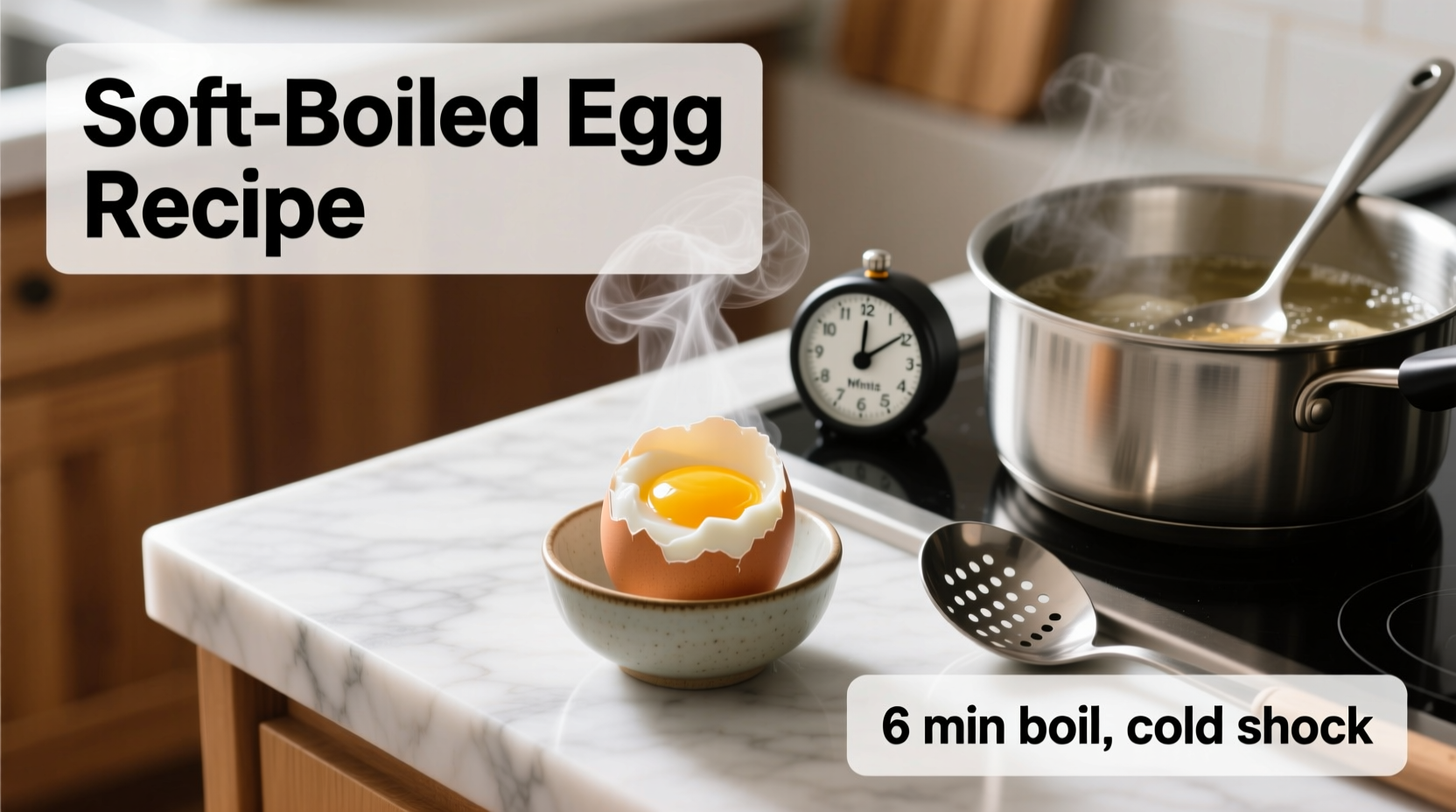Want to master the art of cooking soft boiled eggs? The perfect method is simple: Place large eggs in a single layer in a saucepan, cover with one inch of cold water, bring to a rolling boil, then immediately remove from heat, cover, and let sit for 6-7 minutes. Transfer to an ice bath for 2 minutes before peeling. This precise timing creates creamy, runny yolks with just-set whites—ideal for dipping toast soldiers or topping ramen.
The Science Behind Perfect Soft Boiled Eggs
Egg proteins coagulate at specific temperatures, which is why timing is critical for soft boiled eggs. According to food science research from the USDA Agricultural Research Service, egg whites begin to set at 140°F (60°C) while yolks start thickening around 150°F (65°C). The ideal soft boiled egg maintains yolk temperature below 158°F (70°C) while fully setting the whites.
| Cooking Time | Yolk Consistency | White Consistency |
|---|---|---|
| 4 minutes | Completely liquid | Slightly unset |
| 5 minutes | Runny center | Firm but tender |
| 6 minutes | Creamy, slightly thickened | Fully set |
| 7 minutes | Perfectly soft-set | Firm yet delicate |
Your Step-by-Step Soft Boiled Egg Process
Preparation Phase: Setting Up for Success
Start with room-temperature large eggs for more consistent results—cold eggs from the refrigerator can crack when added to hot water. Use a saucepan large enough to hold eggs in a single layer with space between them. Fill with enough cold water to cover eggs by one full inch. Adding a teaspoon of vinegar to the water helps prevent cracking by strengthening the egg white proteins.
Cooking Phase: Precision Timing Matters
Place your saucepan over medium-high heat and bring the water to a gentle rolling boil. Once boiling, immediately remove from heat, cover with a tight-fitting lid, and set your timer:
- 6 minutes for extremely runny yolks (ideal for dipping)
- 6.5 minutes for balanced creamy texture (most versatile)
- 7 minutes for slightly more set yolks (easier to handle)

Cooling and Peeling: The Critical Final Steps
When your timer ends, immediately transfer eggs to an ice bath using a slotted spoon. Let them chill for exactly 2 minutes—any less and they'll continue cooking; any more makes peeling difficult. For easy peeling, gently tap the egg on a hard surface to create fine cracks, then roll between your palms to loosen the shell. Start peeling from the wider end where the air pocket resides.
Food Safety Considerations for Soft Boiled Eggs
The USDA Food Safety and Inspection Service recommends consuming soft boiled eggs immediately after preparation. If storing, keep refrigerated below 40°F (4°C) and consume within 2 days. Soft boiled eggs should reach an internal temperature of at least 145°F (63°C) for safety while maintaining the desired soft texture—achieved through our precise 6-7 minute method.
Troubleshooting Common Soft Boiled Egg Problems
Eggs Cracking During Cooking
This typically happens when cold eggs hit hot water too abruptly. Prevent this by starting with room-temperature eggs and lowering them gently into the water with a spoon. Adding vinegar to the cooking water also helps coagulate whites faster if cracks do occur.
Overcooked or Undercooked Results
Inconsistent results often stem from variable egg sizes or inaccurate timing. Always use large eggs for standard timing, and adjust by 30 seconds for extra-large or jumbo eggs. Use a dedicated kitchen timer rather than your phone to avoid timing errors. Altitude affects boiling points—add 15-30 seconds per 1,000 feet above sea level.
Peeling Difficulties
Fresh eggs are harder to peel because their lower pH causes stronger membrane adhesion. For easier peeling, use eggs that are 7-10 days old. The ice bath duration is crucial—2 minutes provides the perfect temperature differential for clean peeling without damaging the delicate whites.
Customizing Your Soft Boiled Eggs
Once you've mastered the basic technique, experiment with these professional enhancements:
- Add a pinch of salt to the cooking water for flavor penetration
- Infuse the water with herbs like thyme or tarragon for subtle flavor notes
- Serve with everything bagel seasoning, flaky sea salt, or shichimi togarashi
- Pair with soldiers (cut toast strips) for classic British-style dipping











 浙公网安备
33010002000092号
浙公网安备
33010002000092号 浙B2-20120091-4
浙B2-20120091-4